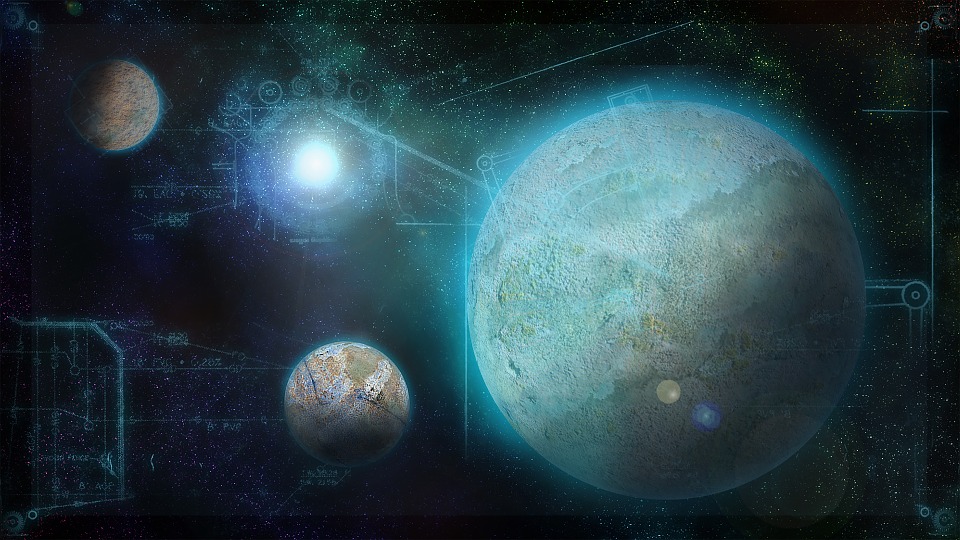
Pixabay
The history of astronomy dates back to antiquity, when the ancient Egyptians, Babylonians and Chinese observed the sky and recorded the movements of celestial bodies. The ancient Greeks also contributed significantly to the development of astronomy, with figures such as Ptolemy and Aristarchus of Samos.
In the Middle Ages, the study of celestial bodies was influenced by religion and the belief in a geocentric universe. However, with the Renaissance and the advancement of science, this belief began to be questioned and heliocentric theories were developed, such as the one proposed by Nicolás Copernicus.
With the advancement of technology, advances in astronomy have been significant. Telescopes and space probes have made it possible to observe previously inaccessible celestial bodies, such as the planets of the solar system and distant galaxies. Furthermore, the detection of extrasolar planets and the search for life on other planets are current research topics in astronomy.
Science has also allowed us to better understand celestial bodies, such as the origin of stars and planets. It is known that stars form from the accumulation of dust and gas in an interstellar cloud, and that planets form from the accumulation of material in a protoplanetary disk around cosmic matter in space.
Celestial bodies in space are objects that are outside Earth, such as planets, stars, comets, asteroids, and dwarf planets. The science that studies these celestial bodies is astronomy.
The search for new planets outside our solar system has been one of the main areas of research in astronomy in recent decades. With the advancement of technology, astronomers have been able to detect more and more planets orbiting distant stars.
One of the most popular methods for planet detection is the transit method, which looks for small dips in a star's light as a planet passes in front of it. Another method is radial velocity, in which small variations in the velocity of a star due to the gravitational pull of an orbiting planet are detected.
To date, more than 4,000 planets have been discovered outside our solar system, known as exoplanets. Many of these planets have Earth-like characteristics and are in the habitable zone of their stars, making them potential candidates to host life.
In addition to the search for Earth-like planets, astronomers are also interested in studying gas giant planets such as Jupiter and Saturn, as well as dwarf planets such as Ceres and Pluto.
The exploration of celestial bodies in recent years, science has advanced in the discovery of new planets outside our solar system. Astronomers have used a variety of techniques to find these planets, including transit, the radial velocity method, and the gravitational microlensing method.
One of the most popular methods for discovering new planets is transit, which is based on detecting the dimming of a star's light as a planet passes in front of it. This method has been used to discover hundreds of planets around nearby stars.
Another popular method is the radial velocity method, which is based on measuring the speed of a star due to the gravitational pull of a planet. This method has been used to discover massive planets close to their star.
The gravitational microlensing method is based on the gravitational effect of a massive object, such as a star or planet, on the light of a distant star. This method has made it possible to discover extremely distant and small planets.
Science has managed to discover a large number of new planets in recent years thanks to advanced technology and different search techniques. Studying these planets allows us to better understand our place in the universe. In recent years, science has made significant progress in the search for planets outside our solar system.
Through methods such as the transit method, the radial velocity method, and the direct imaging method, astronomers have been able to detect and confirm the existence of hundreds of extrasolar planets, also known as exoplanets. One of the most recent planets to be discovered is the planet Kepler-1649c, which lies approximately 300 light-years from Earth in the constellation Cygnus.
This planet is particularly interesting because it is in the habitable zone of its star, which means that it could have conditions similar to those of Earth and therefore could be capable of supporting life.
Another recently discovered planet is the planet Kepler-438b, which lies approximately 640 light-years from Earth in the constellation Lyra. This planet is similar in size to Earth and is also in the habitable zone of its star, making it a promising candidate for the search for extraterrestrial life.
In addition to these two planets, several other planets have also been recently discovered to be in the habitable zone of their stars, including the planet TRAPPIST-1d, the planet LHS 1140b, and the planet Ross
Bibliographic reference consulted
-. "An Introduction to the Solar System" by Mark A. Garlick, 2020.
-. "The Universe in Your Hand: A Journey Through Space, Time, and Beyond" by Christophe Galfard, 2015.
Congratulations @karin91! You have completed the following achievement on the Hive blockchain And have been rewarded with New badge(s)
Your next target is to reach 20 posts.
You can view your badges on your board and compare yourself to others in the Ranking
If you no longer want to receive notifications, reply to this comment with the word
STOPTo support your work, I also upvoted your post!
Check out our last posts:
Support the HiveBuzz project. Vote for our proposal!